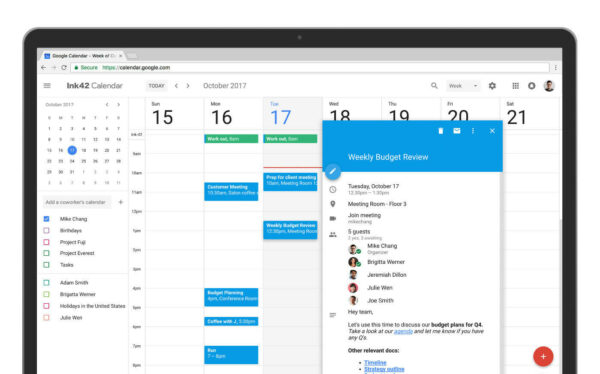Calendars, specifically Google Calendars, are a blessing and a curse. They’re helpful for planning meetings, calculating time spent on certain activities, and even keeping up with friends and social gatherings.
But our calendar can easily become overwhelming and unmanageable. There’s nothing worse than opening up your calendar for the week and immediately being overwhelmed or lost in those small blue meeting boxes. That’s why we’re here to round up our favorite calendar tools.
Add to that the fact that we’re spending more and more time in meetings — think 15-50% of our total week — and you’ve got a recipe for calendar disaster. We’ve rounded up some of our favorite extensions and calendar tools that will help keep your day organized and increase your overall productivity. Here are a few of our favorites,
1. Hive

Hive is a tool that helps you bring your project management needs and your calendar to one single dashboard. A great way to view tasks when working on deadlines is through Hive’s calendar view. The feature offers a flexible view of any project. You can show your calendar in several ways based on your preferences:
- Weekly
- Monthly
- 6 weeks
- Include weekends
Hive Calendar also helps you can run great meetings efficiently, making it one of our top calendar tools. The tool allows you to capture the attendee list and meeting logistics by simply syncing your calendar with Hive. You can easily connect your Gmail or Outlook calendar with Hive to view all of your workplace to-dos in one tool.
To enable Hive Calendar, visit the Apps section on the left-hand toolbar and select Hive Apps. Hive Calendar is an available app listed there. Toggle it on, and sign in to your email account and authorize the connection. Once enabled, go back to your note and link it to your meeting. Hive will populate all the meeting details for you!
Hive integration with Google Calendar allows you to have a new corresponding task populate in Hive, making it one of our favorite calendar tools. This will help you organize to-dos and next steps for any Google Calendar meetings you’ve got upcoming.
An added bonus? You can get started in Hive for free today.
2. Doodle

Doodle is a great all-in-one scheduling tool that allows you to view open meeting times on colleague’s calendars, so you can schedule meetings with a few clicks. One of the original calendar tools, it allows you to quickly see who is available when, and even auto-adjusts to guest timezones, and can sync with Google Cal, Office 360 and iCal.
Doodle is also very useful when booking meetings with large groups — the tool easily help you sift through available times, and identifies people who are free “if need be” at specific hours. You can also set reminders to be sent to attendees to help ensure people show up for the meeting on time. It is the ultimate calendar organization enhancer.
Basically, it shouldn’t take 30 emails to schedule a 30 minute meeting, and Doodle ensures efficiency and helps streamline scheduling both internal and external regroups.
You can test this calendar tool out with a 14-day free trial here.
3. Calday

Meet Calday, the coolest free online appointment scheduling platform you’ll ever need. Booking clients is a breeze with just one link, and you’ll love all the awesome perks it brings. It’s super easy to use, with a built-in calendar for all your scheduling needs. Whether your business is online, offline, or a little bit of both, Calday’s got your back. Your clients can book multiple services at once, and you can access everything through our web and mobile apps – making it one of our top calendar tools for teams.
Calday is perfect for 1:1 meetings, group classes, recurring events, and so much more. It’s the go-to choice for recruiting, sales teams, education, hiring, beauty, and even personal use. With Google Cal, Office 360, and iCal integration, they’ve got everything covered. Ready to get started? Create your free account in just 2 clicks!
4. Booknetic
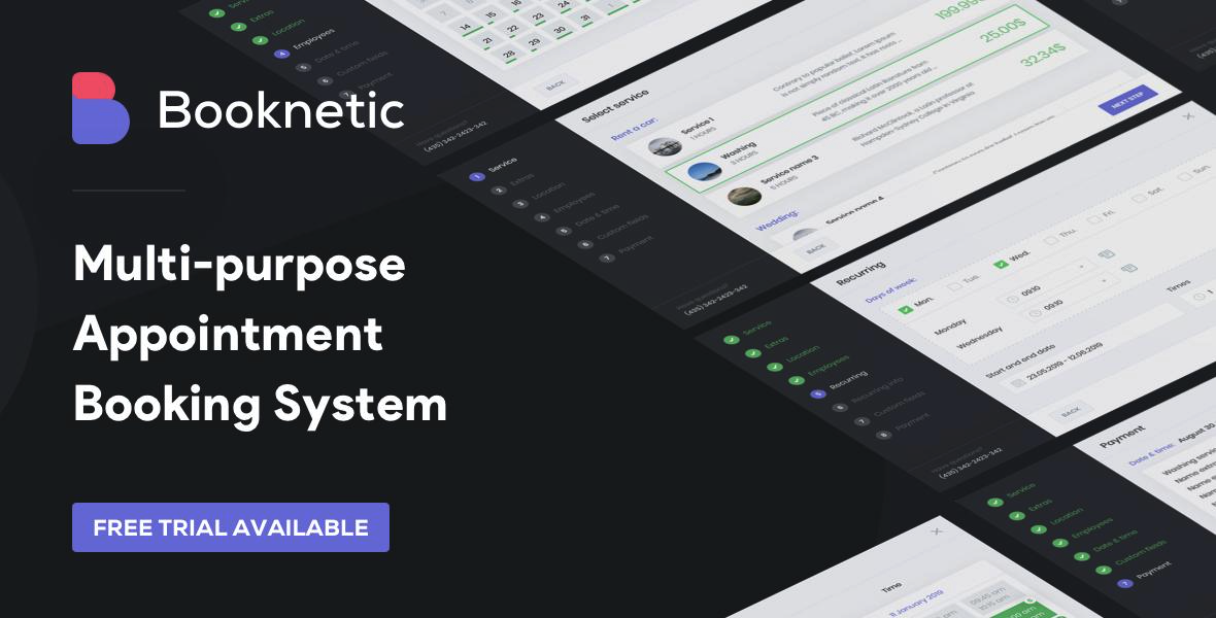
Booknetic is an appointment booking WordPress plugin that helps automate your online bookings – making it one of the top online calendar tools. Set reminders, take deposit payments, and set recurring appointments, all within the plugin. Booknetic features a responsive design allowing it to work great on different screen sizes and browsers. You can personalize the appointment booking widget with a form-builder, customize the design, or select from premade templates.
Your customer’s information is instantly saved, ready for you to access them from the admin panel. Booknetic also offers several add-on features including coupons, giftcards, reports and integrations with several popular messaging apps.
5. Event Merge
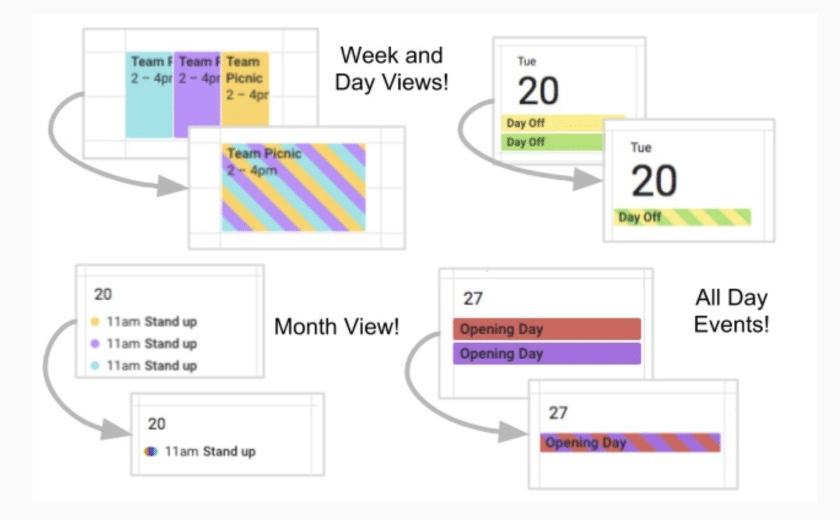
Most of us have experienced the complication of having more than one Google calendar. Our friends put events on our personal Gmail calendar, but coworkers but events on our work one. Trying to toggle between the two can be time consuming and confusing. But we’ve got the solution: Event Merge.
This app is what it sounds like — a killer Chrome extension that merges multiple Google Calendars into one, central view. This is a major key for calendar organization.
Once the calendars are merged, the events will show up as striped color blocks, combining the colors from each calendar, making it one of the best calendar tools for busy teams. You can also execute the merge for daily, weekly, monthly, or day-long events. This is one of our top calendar tools that largely flies under the radar.
6. Zoom
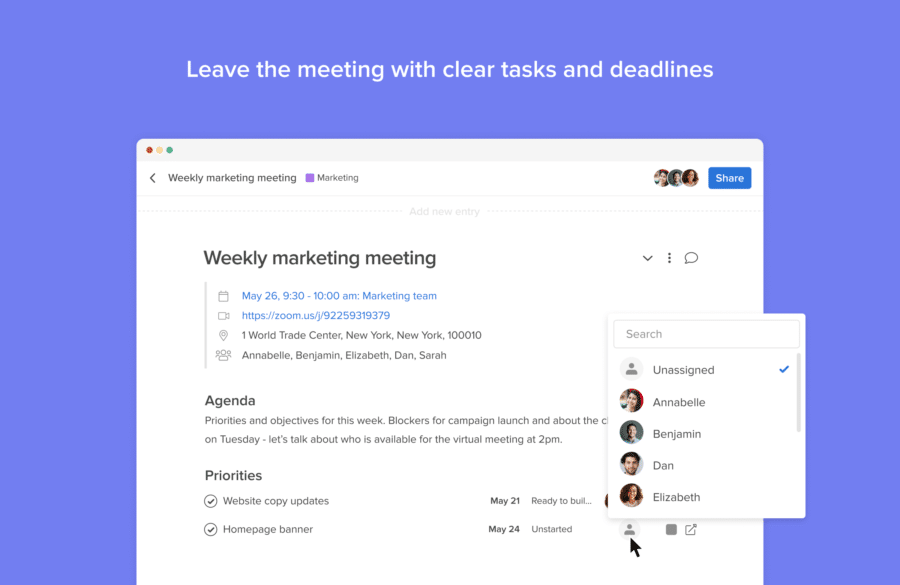
This is a company you’ve probably heard a lot about and seen in the news recently. And for good reason. It’s a best-in-class video chatting solution, and invaluable for teams that have remote employees or who frequently conduct client calls. Zoom also records and provides each meeting upon conclusion, which is super helpful for interviews, important meetings, and any sort of team auditing
Zoom’s Google Calendar extension, specifically, allows you to immediately create a Zoom meeting from a calendar invite. This is a favorite for people trying to connect from different offices, or just who want an efficient way to launch a video meeting, making it one of our favorite calendar tools.
7. Enable Working Hours
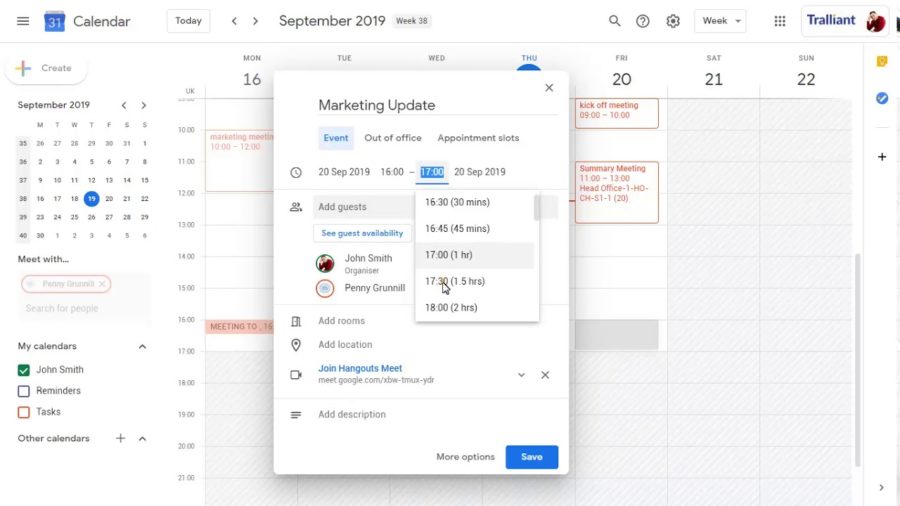
You can actually mandate specific working hours on your own calendar, so when people invite you to a meeting outside of your working hours, they’re notified. This will help people better understand your schedule and overall availability, and organize your calendar effectively.
In addition, Google launched a feature that automatically applies working hours by guessing your “on” hours based on previous meetings. If the estimate doesn’t look right to you, it’s easy to tweak, and we find it really decreases the volume of back and forth over meeting times.
Bonus: This might be obvious, but downloading the Google Calendar mobile app, or another calendar app, is really life-changing. If you need to check your schedule for the next day, see what the action items are for a meeting, or quickly reference a coworker’s schedule, the mobile app is great. You can also set notifications to push through on your phone before a meeting starts.
8. Toggl
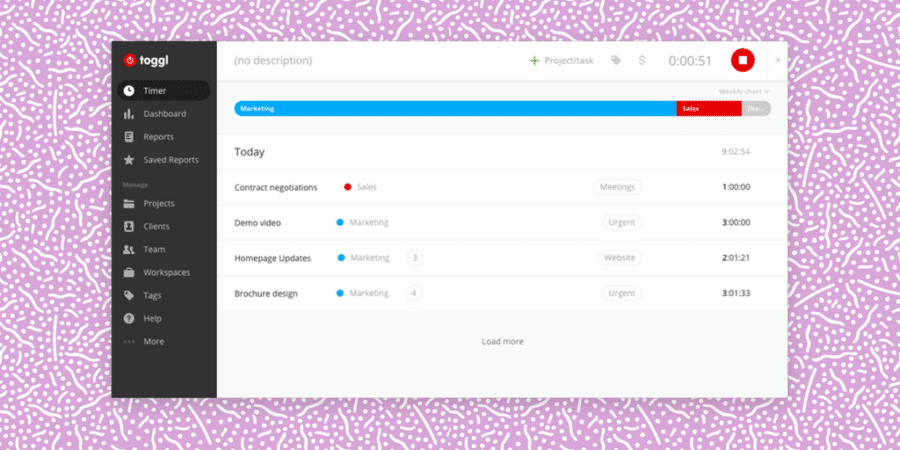
Toggl is a time-tracking and resourcing tool that helps you identify time spent on projects. The tool is easy to use, and even if you forget to turn on tracking, it has idle detection and reminders to improve accuracy. You can also break down hours by client, task, or project to help figure out which areas are the most costly.
To use Toggl, you can download the app on your phone, desktop, or use the Google Chrome extension for easy tracking. You can then sync Toggl with your Google Calendar, which activates a timer for each calendar event and populates the time log with relevant appointment information.
Toggl even has a great 30 day free trial so you can test out the tool’s capabilities, making it one of our favorite calendar tools.
9. Enable Desktop Notifications
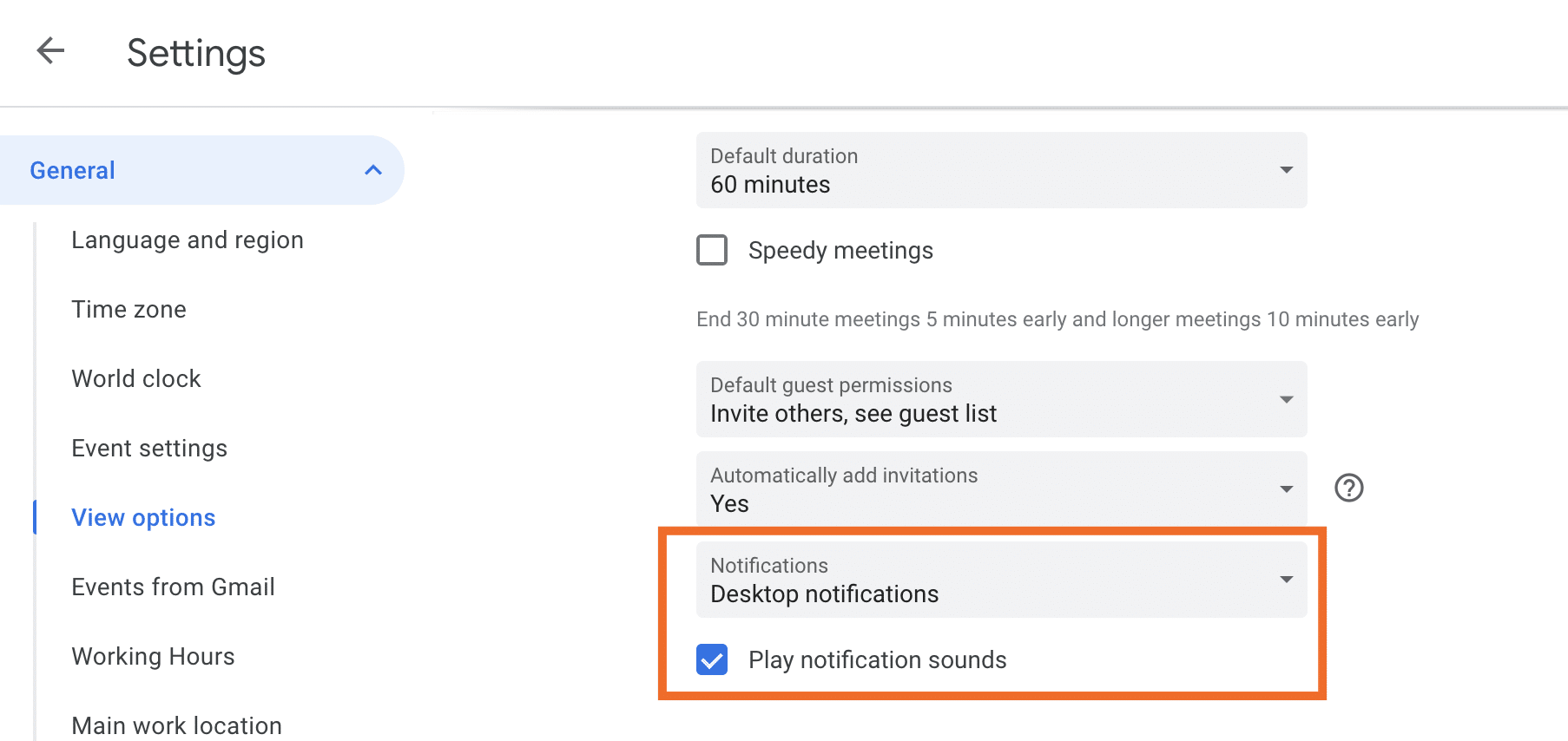
Desktop notifications are another native setting that you can enable in your Google Calendar. Like the Hive notifications, this setting will remind you of upcoming meetings you have 15-minutes before they start. This can help you prep, organize, and decrease the amount of times your late to, or forget, a call.
10. Clockwise
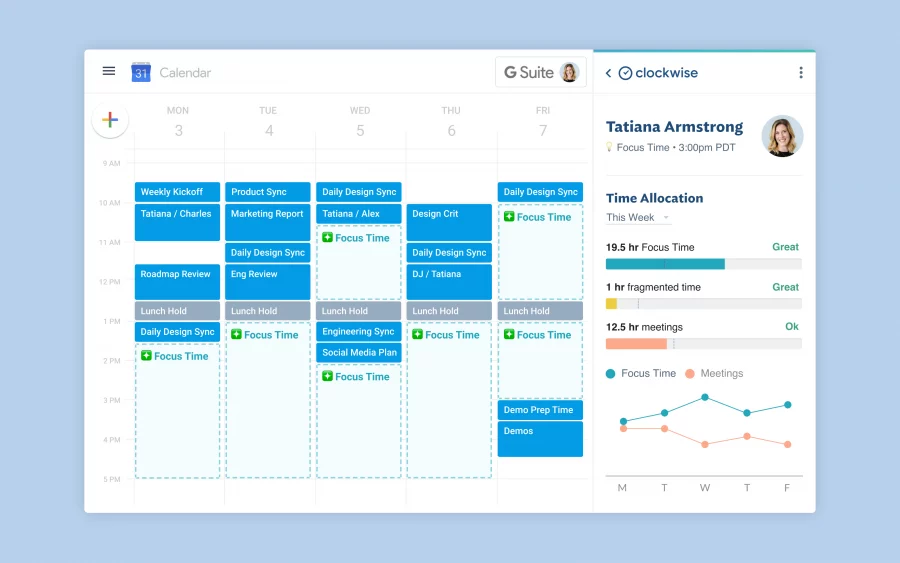
Clockwise is a smart calendar tool that simplifies the meeting booking process for all parties involved. This tool actually moves meetings for you to optimize your time most effectively. It creates what the app calls “focus time,” which allows you to carve out time to get actual work done. With this tool, you can also identify which times you prefer to meet, adjust for different time zones, and much more.
11. Calendly
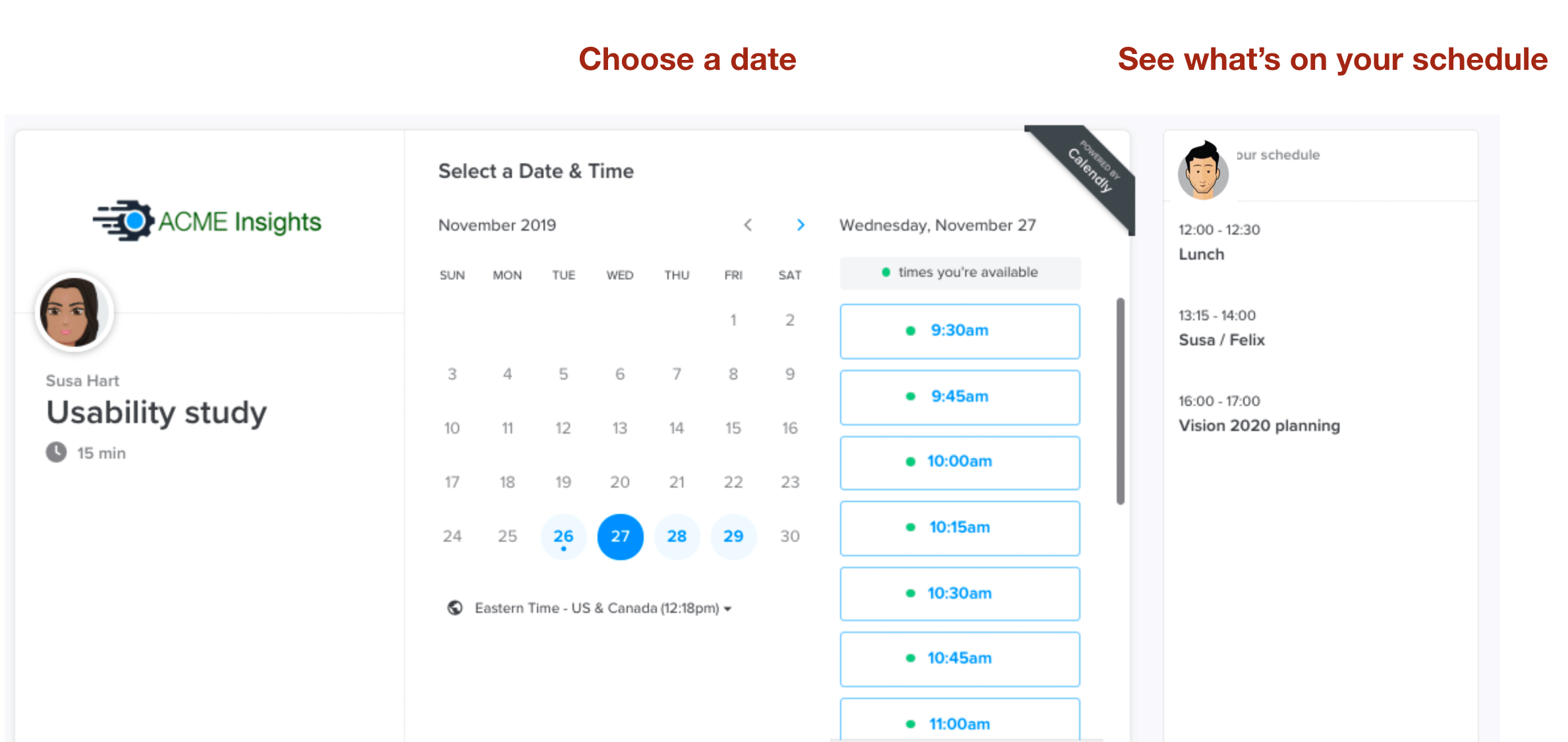
Calendly is an amazing scheduling tool that allows individuals to immediately schedule time without the back and forth. With Calendly, you can input your availability preferences and set specific calendar rules, from there, you’ll have a quick-book link that people can access to grab time with you. Additionally, Calendly also supports round-robin scheduling for teams, making it one of our favorite calendar tools.
12. Appointy
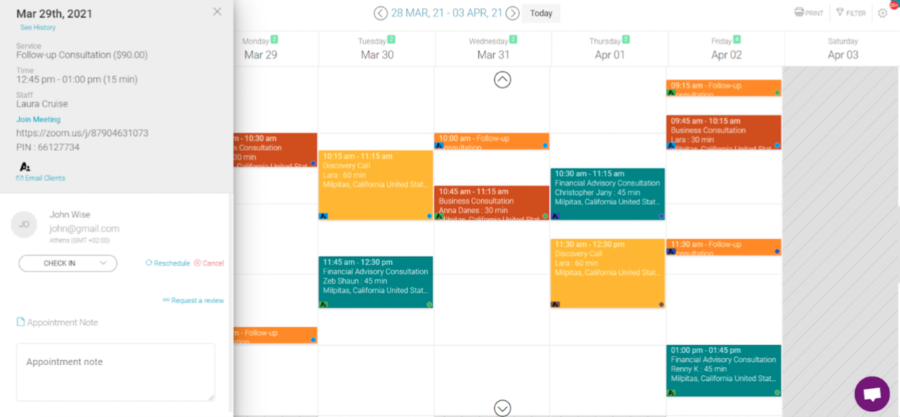
Appointy is an intuitive scheduling software that comes with an inbuilt online calendar, specifically designed to help individuals organize their schedule efficiently. Known for its easy-to-use interface, the software lets you easily set staff availability, simply drag and drop for a quick reschedule, and cancel appointments with just a click.
This tool lets you color-code the various services so that you can differentiate between appointments and identify them at a glance. You can enable two-way sync with Google Cal, iCal, & Outlook calendar, which helps you have your personal and professional schedules in one place, thus avoiding any overlap. You can also send automated reminders & notifications to clients to ensure they show up for their appointments on time.
The best part? You can test Appointy out for free in their 14-day trial!
13. Google Calendar

Google Calendar is a top choice for an online calendar tool, primarily for its seamless integration with the vast ecosystem of Google applications and services. Whether it’s Gmail, Google Tasks, Google Meet, or Google Drive, the interaction between these applications ensures an efficient workflow. For instance, the integration of Google Meet makes scheduling and joining online meetings effortless. It also has excellent sharing capabilities, making it a great tool for team-based scheduling, fostering collaboration and transparency.
In terms of functionality, Google Calendar has features like color-coding, multiple calendars view, and event reminders. Its easy-to-use interface gives you a smooth user experience, whether you’re scheduling a single event or managing a complex project timeline. Additionally, Google Calendar can access your schedule from anywhere, whether you’re on a PC, Mac, Android, or iOS device.
Best of all, you can use Google Calendar completely free, limited to sharing the calendar in read-only form. There’s also a business version that lets you add, delete or change events by as many users as desired and it’s priced at $5/user/month or $50/user/year.
14. Fantastical
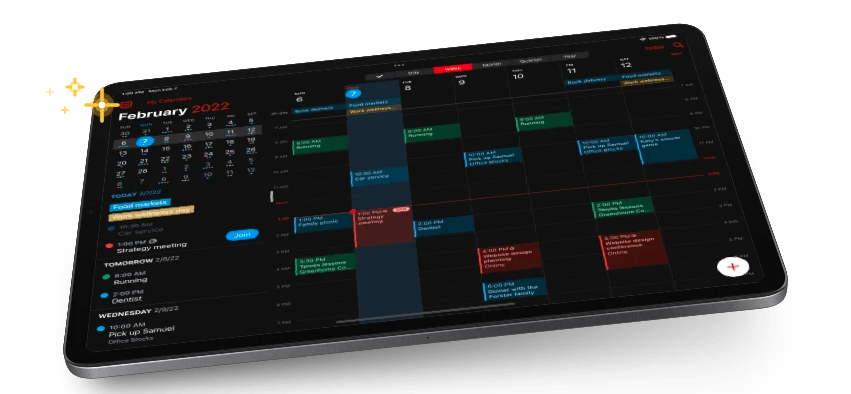
A look at Fantastical’s interface, above.
Fantastical is a calendar tool that offers a beautiful and friendly user interface with multiple views, including detailed full-screen views for iPhone, iPad, and Mac. Like other tools, Fantastical will give you a comprehensive view of your calendar by day, week, month, quarter and year.
It will let you quickly put up files and photos you will need at a meeting or for your next task. It will also let you create tasks and event templates for recurring ones. Also, if you’re looking for the best social media content calendar tools, this could be a great way to merge your social media calendar with other work appointments.
The best feature of Fantastical? Focus Filters. With this feature, your calendar will automatically adjust and filter only what you want to see. For example, your Work calendar set will automatically hide when you are using a Personal Focus.
Focus Filters help you automatically focus on what’s important right now. Warning: You need to have iOS 16 / Ventura or later to fully use Focus Filters.
Pricing: Fantastical costs $4.75 per month for a single user. A family/business account is available and accommodates up to 5 users for $7.50 per month.
